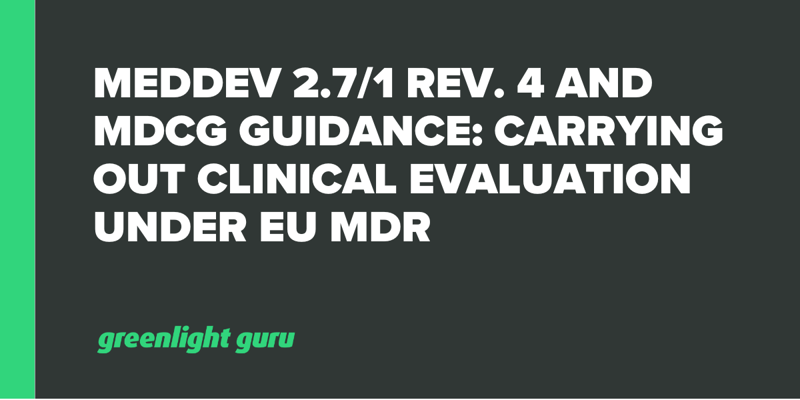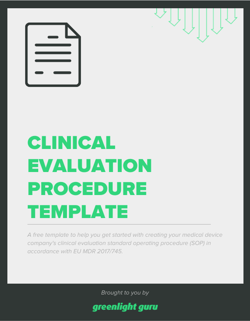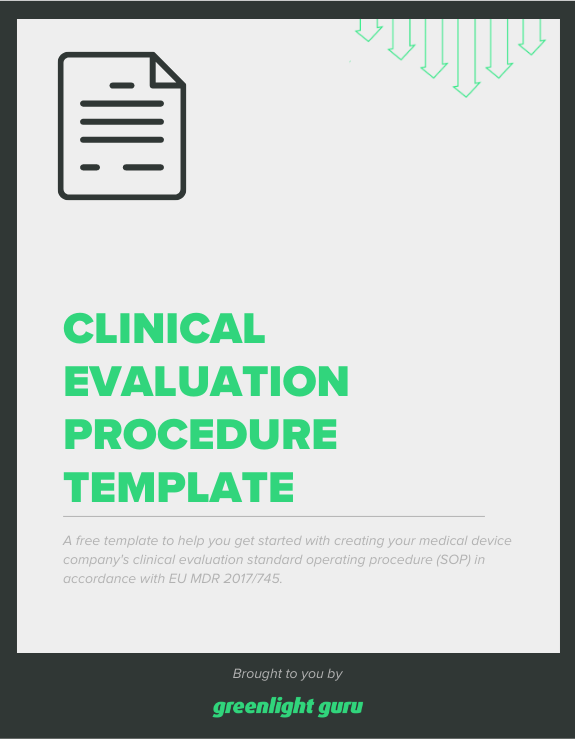MEDDEV 2.7/1 Rev. 4 & MDCG Guidance: Carrying Out Clinical Evaluation Under EU MDR

When regulatory bodies need to clarify or establish expectations regarding a part of their regulations, they put out guidance documents.
Guidance documents like MEDDEV 2.7/1 Rev. 4, which covers clinical evaluation in the EU, aren’t legally binding. But they do provide some much needed direction to medical device manufacturers who want to stay on the right side of the regulations.
Right now, though, there are two sets of guidance documents available in the EU: MEDDEV guidances and Medical Device Coordination Group (MDCG) guidances.
-
MEDDEV guidance documents, like 2.7/1 Rev. 4, are aligned with the old Medical Device Directive (MDD) and Active Implantable Medical Device Directive (AIMDD).
-
MDCG guidance documents, on the other hand, are aligned with the new EU Medical Device Regulations (MDR).
The MDCG guidance documents are slowly supplanting the MEDDEV documents, but there are still holdouts, like MEDDEV 2.7/1 Rev. 4. So today, let’s get into why MEDDEV 2.7/1 Rev. 4 is still being used and how it relates to new MDCG guidance.
What does MEDDEV 2.7/1 Rev. 4 cover?
MEDDEV 2.7/1 Rev. 4 provides guidance to manufacturers on carrying out a clinical evaluation of their medical device. It offers “a common approach to clinical evaluation”, while also noting that the “depth and extent of clinical evaluations should be flexible and appropriate to the nature, intended purpose and risks of the device in question.”
MEDDEV 2.7/1 Rev. 4 starts with covering the basics, such as:
-
The general principles of clinical evaluation
-
Why clinical evaluations are important and why they are undertaken
-
Performing a clinical evaluation for you initial CE marking
-
How to update the clinical evaluation
-
Who should perform the clinical evaluation
But it also dives deeper into how you should carry out your clinical evaluation, and how you should identify, appraise, and analyze clinical data. As the title notes, it also includes information on the activities of notified bodies and their responsibilities in assessing a manufacturer’s clinical evaluation.
Is MEDDEV 2.7/1 Rev. 4 still relevant under EU MDR?
The full title of MEDDEV 2.7/1 Rev. 4 is “Clinical Evaluation: A Guide for Manufacturers and Notified Bodies under Directives 93/42 EEC and 90/385/EEC.”
The reference to the MDD and AIMDD should be a big clue that this document is not aligned with EU MDR. However, while the regulations governing clinical evaluation have changed, the general principles of carrying out a clinical evaluation have not.
And for now, MEDDEV 2.7/1 Rev. 4 is still one of the go-to documents for clinical evaluation. In fact, several of the MDCG guidance documents that cover clinical evaluation refer to parts of MEDDEV 2.7/1 Rev. 4.
MDCG 2020-6 - Guidance on sufficient clinical evidence for legacy devices even includes an appendix that tells manufacturers which sections in MEDDEV 2.7/1 Rev. 4 are still relevant under the MDR for applying that guidance.
What you need to remember is the MDCG guidance documents are specific to MDR and have been issued to help manufacturers meet the requirements of the regulation. They represent the latest thinking from the European Commission and cover new requirements under MDR, such as increased emphasis on the Post-Market Clinical Follow-up (PMCF).
However, MEDDEV 2.7/1 Rev. 4 isn’t irrelevant yet. It’s still a useful reference for carrying out clinical evaluation in the EU when used alongside EU MDR and the MDCG guidance documents.
Which MDCG guidance documents cover clinical evaluation?
If you head to the MDCG’s list of guidance documents, you’ll find quite a few that cover specific aspects of clinical evaluation that are new or different under MDR, such as the PMCF:
-
MDCG 2020-5: Guidance on clinical evaluation – Equivalence
-
MDCG 2020-6: Guidance on sufficient clinical evidence for legacy devices
-
MDCG 2020-7: Guidance on PMCF plan template
-
MDCG 2020-8: Guidance on PMCF evaluation report template
-
MDCG 2019-9: Summary of safety and clinical performance
-
MDCG 2020-13: Clinical evaluation assessment report template
You’ll also find several guidance documents that cover clinical investigations, which are typically one of the primary sources of data for a clinical evaluation in the EU.
-
MDCG 2020-10/1 Appendix: Clinical investigation summary safety report form
-
MDCG 2020-10/2: Guidance on safety reporting in clinical investigations
-
MDCG 2021-6: Regulation (EU) 2017/745 — Questions & Answers regarding clinical investigation
-
MDCG 2021-8: Clinical investigation application/notification documents
-
MDCG 2021-20: Instructions for generating CIV-ID for MDR Clinical Investigations
-
MDCG 2021-28: Substantial modification of clinical investigation under Medical Device Regulation
These documents explain and expand on the requirements found in EU MDR, but in some cases, like clinical evaluation, they also bridge the gap between older guidance like MEDDEV 2.7/1 Rev. 4 and the new regulations.
Greenlight Guru is your end-to-end solution for everything related to clinical evaluation
EU MDR clearly states that “the clinical evaluation and its documentation shall be updated throughout the lifecycle of the device.” Knowing that this is a continuous process, doesn’t it make sense to manage it using a system that is purpose-built to help you throughout the entire lifecycle of your medical device?
Greenlight Guru’s MedTech Lifecycle Excellence Platform is an end-to-end solution, not just for managing your clinical evaluation, but for connecting all the different teams, processes, and data that get a product to market and keep it there.
The clinical data and post-market activities that feed into your clinical evaluation shouldn’t live in a silo. If you’re ready to connect your data and get visibility into any point of your product’s lifecycle, then get your free demo of Greenlight Guru today.
Tom Rish is a Medical Device Guru at Greenlight Guru who works with customers to utilize their QMS software to build safer products on expedited timelines. He is a Biomedical Engineer who began his career developing implant and instrument systems in the orthopedic industry. He enjoys helping customers successfully...
Related Posts
MDCG 2020-6 Explained: Sufficient Clinical Evidence for Legacy Medical Devices in the EU
How to Create a Clinical Evaluation Report (CER) under MEDDEV & MDR (Part 4 of 4)
Ultimate Guide to Device Class Requirements under EU MDR
Get your free template
Clinical Evaluation Procedure Template











